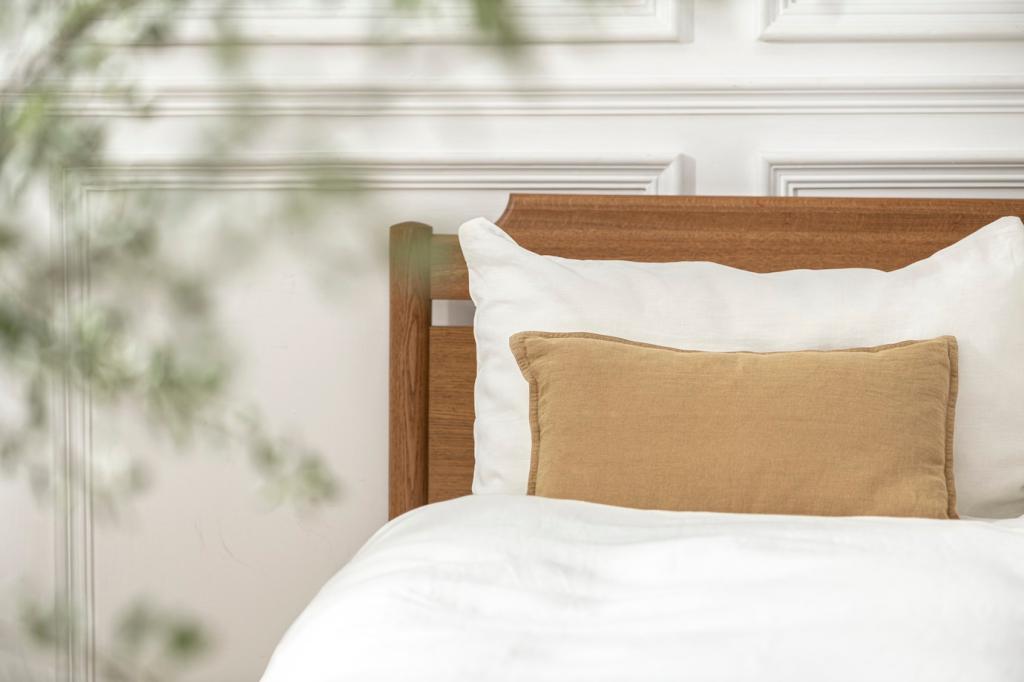
Upcycling and Repurposing in Sustainable Furniture Design
Upcycling and repurposing have emerged as pivotal strategies in sustainable furniture design, reshaping how we perceive waste and the lifecycle of materials. By transforming discarded or undervalued items into functional, beautiful furniture, designers and makers contribute to a circular economy. This approach not only minimizes environmental impact but also fosters creativity and uniqueness in interior spaces. As environmental concerns intensify, upcycling and repurposing highlight innovative ways to merge sustainability with aesthetics, championing a future where resources are respected and design becomes a force for positive change.

Rethinking Waste as a Resource
Redefining waste as a valuable resource is central to the upcycling approach in furniture design. Instead of viewing discarded wood, metal, or fabric as merely landfill-bound debris, designers see untapped potential for transformation. This shift requires a creative eye and a willingness to work within the constraints of available materials, challenging preconceived notions of what constitutes suitable furniture components. By doing so, upcycling not only diverts waste from landfills but also inspires more mindful consumption patterns and greater appreciation for the material world around us.
Celebrating Material Stories and Character
Every upcycled piece carries with it a unique story and distinct character, shaped by its former life and the hands that transform it. By preserving the marks, patinas, and imperfections from previous use, designers highlight the authenticity and history embedded within the materials. This approach contrasts sharply with the anonymity of mass-produced furniture, offering consumers items with deeper meaning and soul. The process of revealing and celebrating these material stories elevates the emotional resonance and intrinsic value of each piece, making sustainable furniture not just a functional object but a conversation starter and legacy.
Creative Constraints Fueling Innovation
Working with existing materials introduces creative constraints that demand innovative solutions and fresh design thinking. Upcyclers must adapt designs to the size, shape, and condition of found items, often resulting in unexpected and inventive forms. These limitations push designers beyond set patterns, leading to new techniques and original aesthetics that redefine what furniture can be. As a result, upcycling serves as both an environmental necessity and a wellspring of creative possibility, proving that limitations can be catalysts for extraordinary design.
Techniques and Practices of Upcycling and Repurposing
Material Selection and Sourcing
Material selection forms the foundation of upcycled and repurposed furniture design. Designers scour salvage yards, demolition sites, or even curbside collections to find materials with hidden potential. Wood from decommissioned barns, metal from obsolete machinery, or fabric remnants from textile factories can serve as the basis for new creations. This careful sourcing process involves evaluating the condition, durability, and aesthetic qualities of each find, ensuring that the chosen materials can support both functional and artistic aims. By giving preference to reclaimed materials, designers preserve resources and infuse projects with unique character.
Adaptive Redesign and Joinery
Adaptive redesign is a core practice in upcycling, involving the reimagining and restructuring of existing items into new forms and functions. Designers skillfully deconstruct old furniture, doors, or industrial parts, then apply joinery techniques to reassemble them creatively. Traditional woodworking methods—such as mortise and tenon or dovetail joints—are often combined with modern fasteners to ensure strength and longevity. This blend of old and new not only honors craftsmanship but also accommodates the variable shapes and sizes inherent in reclaimed materials, resulting in furniture that is both sturdy and distinctive.
Finishing and Preservation Methods
Finishing and preservation are essential to the longevity and appeal of upcycled furniture pieces. Designers utilize eco-friendly stains, oils, and sealants to protect surfaces while enhancing the natural beauty and aged patina of salvaged materials. Environmentally conscious methods, such as water-based finishes or plant-derived waxes, prevent introducing harmful chemicals into the home and environment. Techniques like sanding, distressing, or adding clear coats can highlight unique grain patterns or textures. Thoughtful finishing not only extends the life of each piece but also accentuates its history and individuality, ensuring that sustainable design does not compromise on quality or aesthetics.
Environmental and Social Impacts of Upcycling
Reducing Landfill Waste and Resource Extraction
One of the primary environmental advantages of upcycling is the significant reduction in landfill waste and the corresponding cutback in resource extraction. When furniture is crafted from reclaimed materials, there is less demand for virgin timber, metals, and plastics. This not only preserves ecosystems but also reduces pollution and greenhouse gas emissions tied to raw material processing. By diverting usable materials from landfills and reintegrating them into new, valuable products, upcycled furniture supports a more regenerative and less wasteful approach to design, aligning with broader global sustainability goals.

